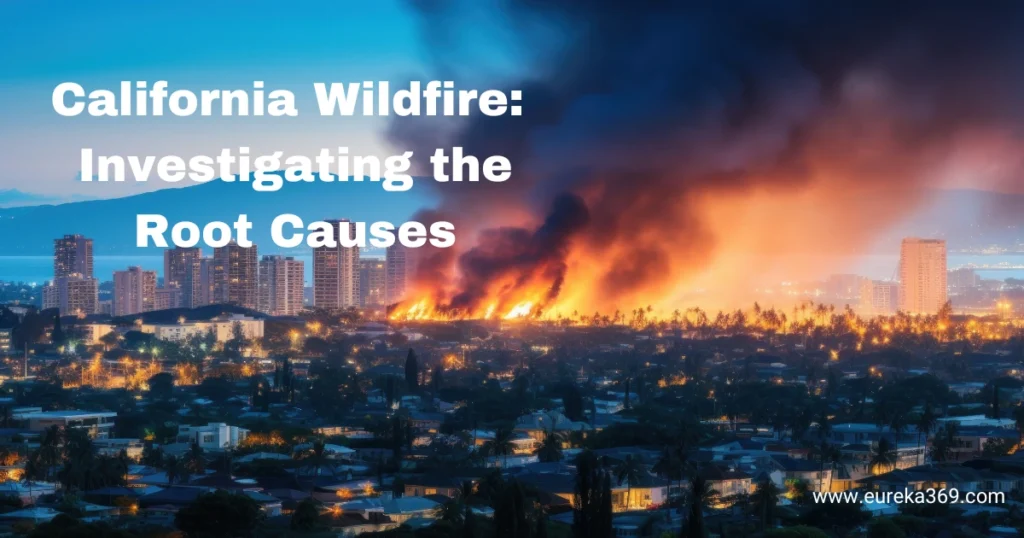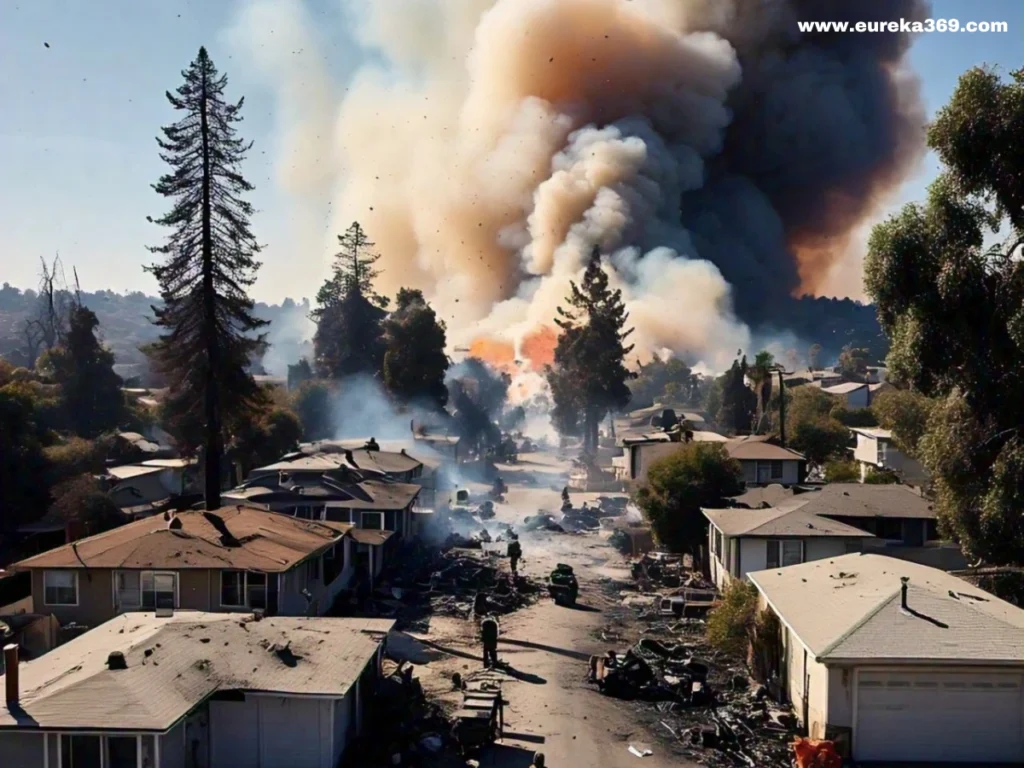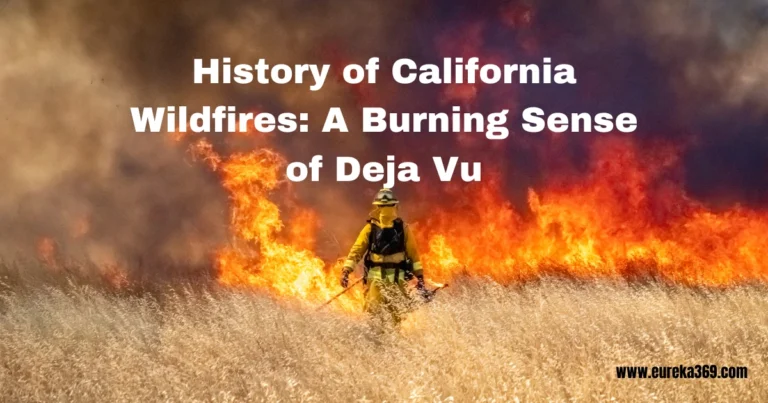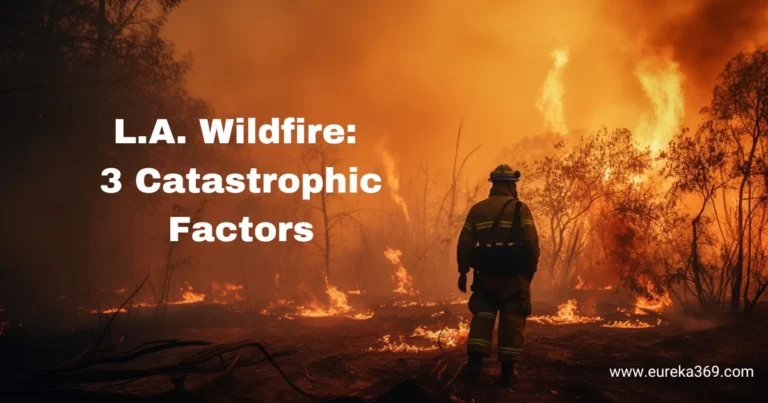“The mountainous topography of California channels and amplifies winds, particularly in areas like canyons, where wind speeds can increase dramatically.”

California wildfires have become a recurring nightmare for residents and wildlife alike. As we approach 2025, it is crucial to investigate the root causes of these devastating events. Understanding the factors that contribute to the frequency and intensity of Los Angeles wildfire can help us develop effective strategies for prevention and mitigation. This blog will explore various aspects of Los Angeles wildfires, including climate change, drought, rising temperatures, and more.
California Wildfires: Climate Change’s Burning Impact
Climate change plays a significant role in the increasing frequency and intensity of Los Angeles wildfire. As global temperatures rise, the state experiences longer and hotter summers. This change in climate creates ideal conditions for wildfires to ignite and spread.
“The combination of dry vegetation and high temperatures makes California a prime candidate for wildfires.”
Moreover, climate change affects precipitation patterns. While some areas may experience heavy rainfall, others face prolonged dry spells. This inconsistency leads to an accumulation of dry vegetation, which serves as fuel for wildfires. As a result, Los Angeles wildfire become more severe and harder to control, posing a threat to both human life and the environment.
The Role of Less Rain in Los Angeles Wildfire

Reduced rainfall is a significant factor contributing to the increasing frequency and intensity of Los Angeles wildfire. Climate change is a primary driver of this reduction, as warming temperatures lead to increased evaporation rates and disrupted atmospheric circulation.
These changes can shift storm tracks, weakening or altering storm systems that would typically bring much-needed precipitation. Additionally, reduced snowpack results in earlier snowmelt and a diminished water supply, further exacerbating drought conditions.
Natural variability also plays a role, with phenomena like El Niño and La Niña cycles impacting atmospheric circulation and precipitation patterns. The Pacific Decadal Oscillation (PDO) can cause long-term shifts in ocean-atmosphere patterns, affecting rainfall. Local factors such as deforestation and urbanization contribute to reduced rainfall as well. Deforestation decreases transpiration, altering local rainfall patterns, while urbanization creates heat islands that can change local precipitation dynamics.
Prolonged Drought Conditions: A Catalyst for Wildfires
Prolonged drought conditions have turned California into a tinderbox, where the lack of moisture creates an environment ripe for wildfires. The state has faced numerous droughts over the past few decades, leading to dry landscapes that are highly flammable.
Climate change contributes to prolonged droughts through increased temperatures, which result in higher evaporation rates and increased soil moisture deficits. The reduction in snowpack and earlier snowmelt further compounds the issue, leading to drier atmospheres with reduced humidity and increased fire risk.
Natural variability also plays a role in prolonged droughts, with multi-year droughts characterized by persistent below-average rainfall. Ocean-atmosphere interactions can create persistent high-pressure systems that block moisture-laden air from reaching California. Human factors, such as the over-extraction of groundwater and unsustainable water use practices, further deplete water resources, making drought conditions more severe.
Heavy Winds: The Accelerant of Wildfires
Heavy winds, particularly the Santa Ana winds in Southern California, play a crucial role in exacerbating wildfire conditions. These winds can reach speeds of up to 100 mph, rapidly spreading flames and complicating firefighting efforts.
“Climate change contributes to stronger winds through warmer temperatures, which increase atmospheric instability and lead to more frequent and intense wind events.”
Additionally, the intensified jet stream can create conditions that amplify wind events, making them more severe. The mountainous topography of California channels and amplifies winds, particularly in areas like canyons, where wind speeds can increase dramatically.
This combination of factors creates a volatile environment that significantly raises the risk of Los Angeles wildfire. Do check out this useful video of StarTalk: Why Are the LA Wildfires So Extreme? in which Mr. Neil DeGrass Tyson in conversation with Danial Swain, a climate expert, who is discussing the main causes and how to mitigate those to avoid such catastrophic events in future; or watch below:
Solutions to Combat Climate Change and Wildfires
Addressing the root causes of climate change and implementing effective wildfire management strategies are essential for reducing the risk of future wildfires in L.A.
1. Improved Forest Management
- Thinning out dense vegetation and creating firebreaks can help reduce the intensity of wildfires.
- Controlled burns can limit available fuel and reduce fire intensity, although they require specific weather conditions for safe implementation.
2. Public Education and Awareness:
- Raising awareness about fire safety measures can help reduce the likelihood of human-caused wildfires.
- Community engagement in fire prevention strategies is crucial, especially during periods of drought.
3. Mitigating Climate Change:
- Investing in renewable energy sources and reducing carbon emissions can help address the broader issue of climate change.
- Implementing sustainable land management practices can improve resilience against wildfires.
Conclusion
The interplay of reduced rainfall, prolonged drought conditions, and heavy winds creates a challenging environment for California, particularly in regions like Los Angeles, where the Los Angeles wildfire threat is increasingly severe.
Hence, understanding the causes is crucial for developing effective strategies to mitigate the impact of Los Angeles wildfires. By addressing the root causes of droughts and wind events, communities can work towards reducing the risk of wildfires and protecting both their homes and ecosystems.
However, mitigating the causes of Los Angeles wildfires requires a comprehensive approach that includes both immediate and long-term strategies. One critical strategy is the implementation of prescribed burns and targeted vegetation management to reduce fuel loads, which are essential for preventing the rapid spread of Los Angeles wildfires.
Additionally, Los Angeles is focusing on enhancing emergency preparedness through advanced technologies like early fire detection systems and improved communication networks. This allows for quicker response times and more effective containment of fires.
Furthermore, promoting sustainable land use practices and enforcing strict building codes are crucial steps towards reducing the risk of Los Angeles wildfires. By adopting these strategies and working collectively, Los Angeles can effectively reduce the impact of climate change on wildfires and create a safer, more resilient future for its communities and ecosystems. This proactive approach not only protects lives and property but also preserves the natural beauty and biodiversity of California’s landscapes. Do check out the three devastating forces behind this inferno.



Leave a Reply